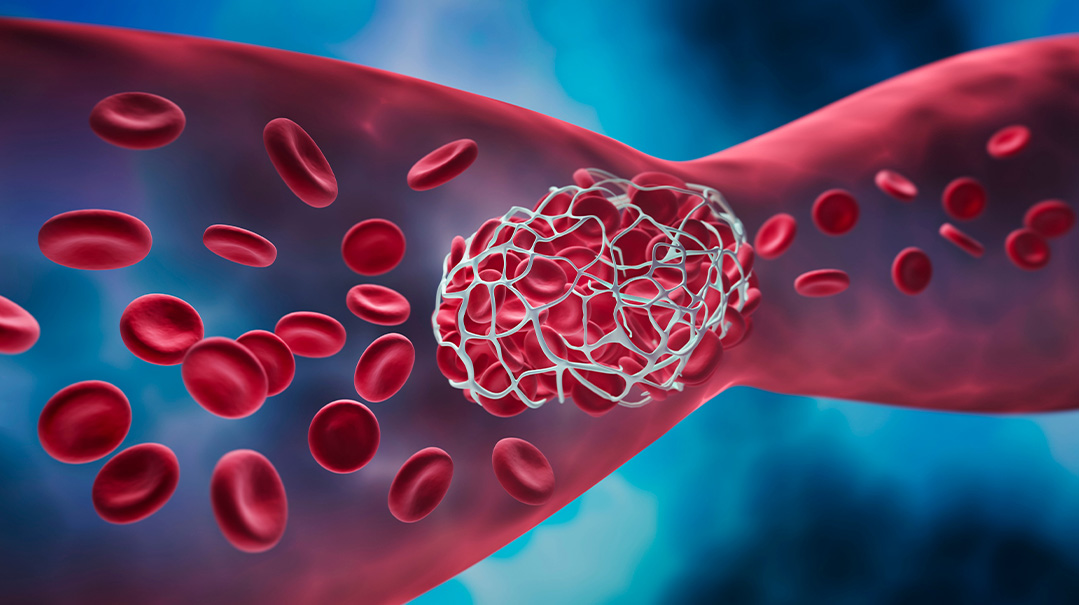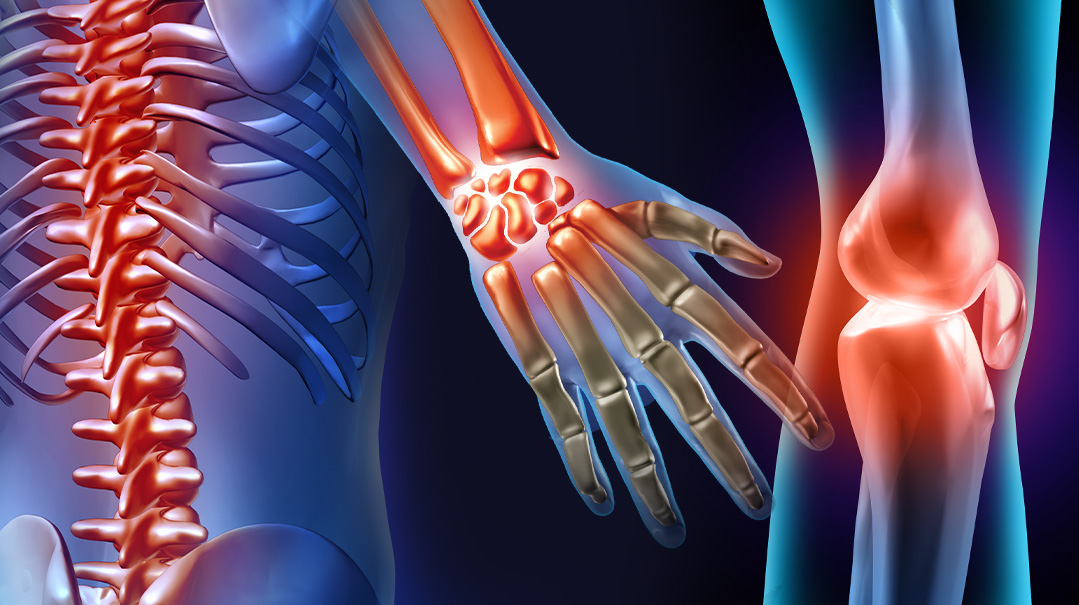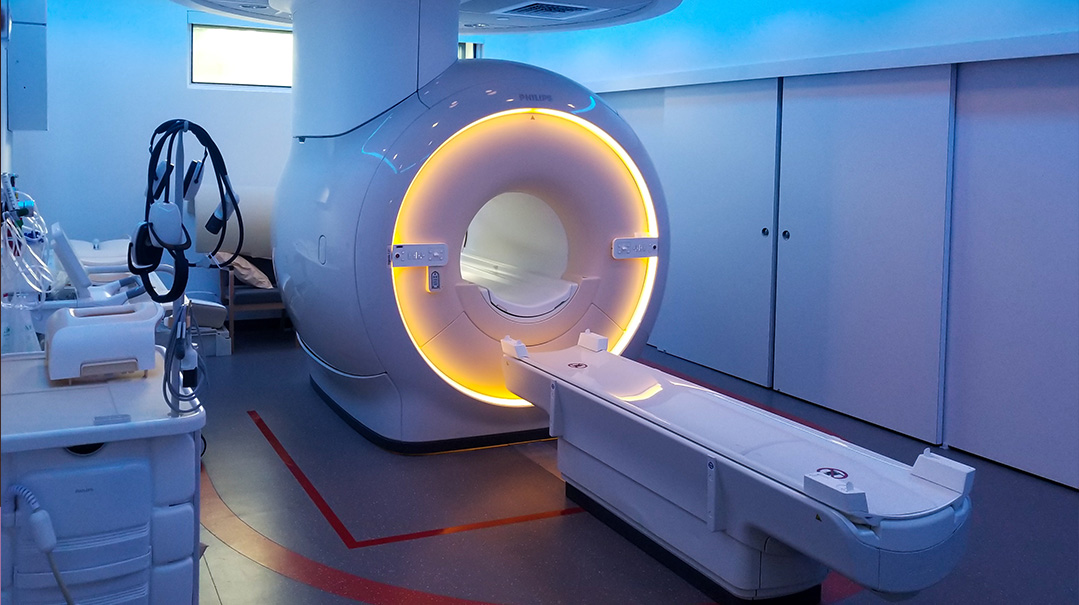Gut Reaction

“I have a relative who deals with exactly this!” she said, with a laugh. “It’s her specialty”

As told to Faigy Peritzman
Esther’s Story
AS the mother of a large family, I lived a hectic life and I loved it. I only wished I could feel better and have enough energy to take care of my family without feeling wiped.
As long as I can remember, I’ve lived with stomach issues. As a teenager, I often wondered why my friends never seemed to have these problems. Bloating, gassiness, and constipation were my constant companions.
I learned to live with it. Metamucil was my go-to fix-it-all and I always tried to stay hydrated and exercise. Still, I saw limited results. Things kept getting worse despite all my efforts.
After several pregnancies, I went to a physical therapist due to symptoms of uterine cervical prolapse. She wanted to work on strengthening my pelvic floor muscles, which had been weakened due to a combination of pregnancies, chronic constipation, and genetics. In the course of our treatment, my digestion issues came up, and she thought her exercises would also help contain the gassiness and promote control over intestinal movements. While she did help me somewhat, she wasn’t targeting the cause of all this stomach upset, but rather the symptoms.
Occasionally I’d try some other tactic — a new laxative, a different exercise. In the back of my brain, I wondered if revamping my diet would help, but I never really got to it. I couldn’t seem to find a dietitian that worked for me. Most of the ones I researched weren’t covered by my insurance, and when I did meet with someone, all they’d focus on was weight control. There was so much more going on in my body than what could be attributed to calorie counting, and I was frustrated that I couldn’t get to the bottom of it.
After my eighth child, I had elective surgery for uterine prolapse. This surgery was a blessing because it forced me to be more proactive about my health. I knew that if I didn’t get to the bottom of my gastrointestinal symptoms, the pressure of constipation would completely undo the surgery. Clearly my body needed an overhaul, but how?
At that point I decided to see a GI to try and rule out any major medical reason for my symptoms. I’d addressed all my digestive issues with my GP many times but had not yet seen a specialist. I still wanted to tackle this on a nutritional level, but felt I should clarify my medical status first.
The GI listened to my symptoms and diagnosed me with SIBO (small intestinal bacterial overgrowth). He also ordered a colonoscopy to rule out anything else. While I had heard of SIBO before, and the diagnosis did sound on target, I was skeptical that medication would be effective. Somehow, I was convinced nutrition was the answer, but I wanted to give mainstream medicine due diligence.
The doctor prescribed Doxycycline, a common antibiotic for SIBO, which would treat the actual bacteria (but not necessarily the underlying cause). I started the pills, but had a painful reaction. I started getting excruciating migraines. It was summertime and the heat coupled with the migraines completely debilitated me.
The doctors were also concerned that the medication had caused a pseudotumor, a rare side effect that mimics symptoms of a tumor and can affect vision. It was beyond scary.
After numerous tests, the doctors concluded that the antibiotics had set off a chain of sinus infections that were causing the headaches. Once I went on sinus medication, it all stopped. I hadn’t even finished the ten days of the antibiotics needed to cure the SIBO, but I was so drained and exhausted I didn’t even care.
It was pure Hashgachah pratis that had me visiting my pediatrician’s office one random afternoon with one of my children. There was a new nurse practitioner there, doing a stint in my doctor’s office as part of her training. We started schmoozing, and for some reason I began telling her about my stomach issues and how frustrated I was that I couldn’t find a dietitian to help me.
“I have a relative who deals with exactly this!” she said, with a laugh. “It’s her specialty.”
I got in touch with Tamar Feldman, a certified dietitian specializing in gut health, right away (see sidebar).
After speaking with her, it was clear to me that at least a large part of my symptoms was caused by the SIBO. But what could I do? I’d already tried antibiotics with terrible results. Tamar explained that although antibiotics will kill the bacteria, it was more important to figure out what was encouraging the growth of the SIBO and to eliminate it at the source.
The first step was to starve the bacteria to eliminate it. Tamar also gave me herbal supplements and probiotics she said would accomplish the same thing the antibiotics would do — without the side effects. Then we began an elimination diet to root out the foods that the SIBO was seeking.
I eliminated all carbs, dairy, onions, and garlic, among other foods. The first few weeks, I ate only protein and a limited amount of produce. Surprisingly, it wasn’t so hard.
After approximately three weeks of a very limited diet, we began to slowly add foods, carefully monitoring their effects. I was able to add almond milk, carrots, and tomatoes to my diet. It took approximately six months until I was able to add fruits, yogurt, cheese, sugar substitutes, honey, and maple syrup. I never reintroduced wheat and white sugar.
I was hyper-attuned to how I was feeling, calling Tamar to describe every reaction and every way in which the foods were affecting me. The process wasn’t without its ups and downs. But when I finally got it down to a science, the results were incredible. I was completely free of trapped gas and the associated bloating. While that may not sound so incredible to those who don’t suffer from these symptoms, I’d lived with these for decades and it was shocking to me to get through a day and feel this well.
The constipation also improved, but I see that all my efforts notwithstanding, I’ll always have a slow digestive system that needs fiber and fluids to keep it going. Still, without the SIBO, I now have a chance to get the constipation under control.
Even my skin cleared up. I’d been finding age spots on my face, and had resigned myself to them as an inevitable part of growing older, but when the SIBO disappeared, these spots disappeared as well.
It’s been about four years since I started my work with Tamar, and I work constantly to maintain my gut health. I feel great, buoyed by energy, and able to give myself and my family the healthy me we all deserve.
Rena’s Story
I’M a go-getter type. When things go wrong, I’m determined to find a solution, and it’s a trait that has stood me well in my journey toward digestive health. Since eighth grade, I’ve experienced stomachaches, severe constipation, and lots of bloating. There’s a family history of constipation, so my parents weren’t concerned. But the symptoms didn’t disappear, and by the time I hit tenth grade, I wasn’t satisfied with just putting up with chronic discomfort. I wanted a higher quality of daily life, and not to have my concerns shrugged off.
I made an appointment with a gastroenterologist, who ran tests to see if I had celiac (I didn’t) and did an endoscopy, which showed some inflammation, but nothing serious. Having ruled out anything major, she gave me her diagnosis: IBS — Irritable bowel syndrome.
Very nice. I could’ve told her my digestive system was always irritable; the question was why. Still, the gastro didn’t seem to be concerned. “Take a daily laxative, eat fiber, and drink a lot of water,” she told me.
Take a daily laxative? I was a teenager; I wasn’t comfortable with needing help to get my body to function normally. “Can’t you become addicted to laxatives?” I asked.
“No,” she dismissed my concern. “I myself take laxatives daily. IBS reacts to stress in your life. The more stress, the more symptoms.”
I was only 16. Sure, I was determined to achieve in high school, but I couldn’t imagine my future life having any less stress! Still, I didn’t seem to have any other options, so the next few years had me trying one laxative or another. I often switched between my two “faves,” just to keep my body regulated. Not my idea of a healthy lifestyle.
While the constipation did improve with the laxatives, the bloating never did. I’d go to sleep completely empty, then try a spoonful of yogurt the following morning and immediately feel bloated. As the day progressed, I’d feel more and more stuffed up. By the end of the day, I felt lousy.
When I came back from seminary, I decided I wanted to pursue a healthier lifestyle. I read a lot about various food choices, but I didn’t know how to implement them on my own. And while I’d been keeping a food diary for years trying to find a pattern behind my issues, I’d never detected any one food that was a trigger. All these plans focused on eliminating specific types of food, and I didn’t think that would help me. Instead, I decided to just eat healthier, still hoping to find a nutritionist who could help me figure out a plan.
That summer, I was working in camp as a division head and got to schmoozing with one of my counselors. She’d had serious sinus issues and was very enthusiastic about a dietitian who’d helped her. Bingo; now I had the name of a good dietitian.
I went on Tamar’s website to book an appointment. As I was reading, I found a description of SIBO. I almost started crying; this sounded exactly like what I’d been suffering from for years! After speaking with Tamar, I went back to my gastro and asked to be tested for SIBO. Sure enough, the test came out positive. But then I hit another hurdle. The best treatment for SIBO was a new antibiotic called Rifaximin, but my insurance refused to cover it. Out of pocket it would cost about $2,000, so that wasn’t an option. My gastro tried to advocate for me, but the insurance company wouldn’t budge.
Finally, Tamar decided to try to treat the SIBO with a herbal approach. I tried the supplements for a week, but got severely nauseous. I wasn’t sure if it was connected, so I stopped the supplements and then felt better. Started them again, and began vomiting. Clearly this wasn’t the answer for me.
Finally, we decided to try a secondary, more common antibiotic that would hopefully kill the SIBO, and Tamar put me on an intense food protocol as well. I was hoping to wean myself off the laxatives, but it was an intimidating goal. While the laxatives may have emptied me, they hadn’t allowed my body to use its own muscles to do the same job naturally. Now, after so many years of inactivity, my intestines were frozen. (So much for not becoming dependent on these things…) While in the past I’d sometimes gotten the constipation under control, I’d still feel bloated, because my intestines weren’t pushing any food along. Now, with Tamar’s plan, things finally began to change.
I’m now completely weaned off laxatives. After so many years, this is major to me. Plus, I can feel my body responding to the diet and relearning what it needs to do. Mastering the food plan is a process for me; so much of what I need to eat is bulky fibers, and it’s hard to get that daily dosage and still have room to eat other foods. Also, I’m terrible about drinking enough water; I simply can’t get it down. But I’m working on it.
I finally know the solution to my digestive health issues, and I’m determined to get to the finish line.
Decoding Gut Health
with Tamar Feldman
What is SIBO?
SIBO stands for small intestinal bacterial overgrowth. Bacteria in our lower intestines (our large intestine) are beneficial for our digestive systems. But the small intestine is supposed to be mostly sterile. Therefore, if bacteria travel upward from the large intestine and spill over into the small intestine, it causes multisymptomatic difficulties.
What are the most common symptoms of SIBO?
Extreme bloating and gassiness
Constipation and/or diarrhea
Abdominal cramping from trapped gas
An uncomfortable feeling of fullness after eating
How is SIBO different from other digestive issues, such as irritable bowel syndrome?
In my opinion, IBS is a bogus diagnosis. It’s basically a description, not a diagnosis, saying, okay, you have a wacky digestive system. But the real question is why? What’s causing these symptoms?
A person needs to figure out the root of what’s causing his system not to function properly, and then he can address and hopefully cure it.
There are numerous factors involved in digestive difficulties, but it’s estimated that 70 percent of people who were told by a doctor that they had IBS were really suffering from SIBO.
What are the common causes of SIBO?
Chronic constipation is the most common cause, and the same chronic constipation then exacerbates the SIBO. The bacteria build up in the system with no escape due to the infrequent bowel movements, and then the SIBO bacteria cause the constipation to become worse. The bacteria then ferment the carbs and sugars that the person is eating, producing methane gas, which freezes the intestines, promoting an even worsening cycle of constipation.
There are several common lifestyle choices that often lead to chronic constipation and then SIBO.
Low intake of fiber from whole grains, especially lacking whole grains
Insufficient fluid intake
Insufficient psychical activity
Pelvic floor muscle imbalances
Crohn’s Disease
How do you diagnose SIBO?
There is a simple breath test that accurately diagnoses SIBO. The bacteria in SIBO produce methane gas and hydrogen gas. With a three-hour breath test, taking samples every 15 minutes, we’re able to detect the high levels of these gases to determine SIBO.
How do you treat SIBO?
A GI doctor will generally treat SIBO with an antibiotic called Xifaxan, which targets the small intestine only, preserving the bacterial growth further down in the large intestine. However, if a person doesn’t get rid of the root of what caused the SIBO to develop, getting rid of it with antibiotics will only provide short-term relief.
I generally treat SIBO with a multipronged approach:
If constipation is the root factor, laxatives and synthetic fibers are used initially, progressively increasing dietary fiber slowly to stimulate the bowel muscle tone. At this point of the process, a temporary low FODMAP diet can be used short term just to manage symptoms. After at least one to two months of proper elimination, most individuals can then progress to the next stage of SIBO interventions.
Antibiotics and/or herbal antibiotics for two to six weeks
Herbs and/or medication for three months post treatment
Tamar Feldman, RDN CDE is a Registered Dietitian and Certified Diabetes Educator, with a virtual practice specializing in gut health, autoimmune disease, and hormone balance. She can be reached via Family First.
Did you ever have a medical problem that you were told “is nothing to worry about,” and it ended up being a serious issue? Did you have symptoms that stymied doctors? We believe sharing our journeys can bring awareness, empathy, and a sense of connection to those who’ve gone through a medical crisis. If you had a medical mystery and would like to be part of this column, please send a brief description of your story to familyfirst@mishpacha.com
(Originally featured in Family First, Issue 806)
Oops! We could not locate your form.







